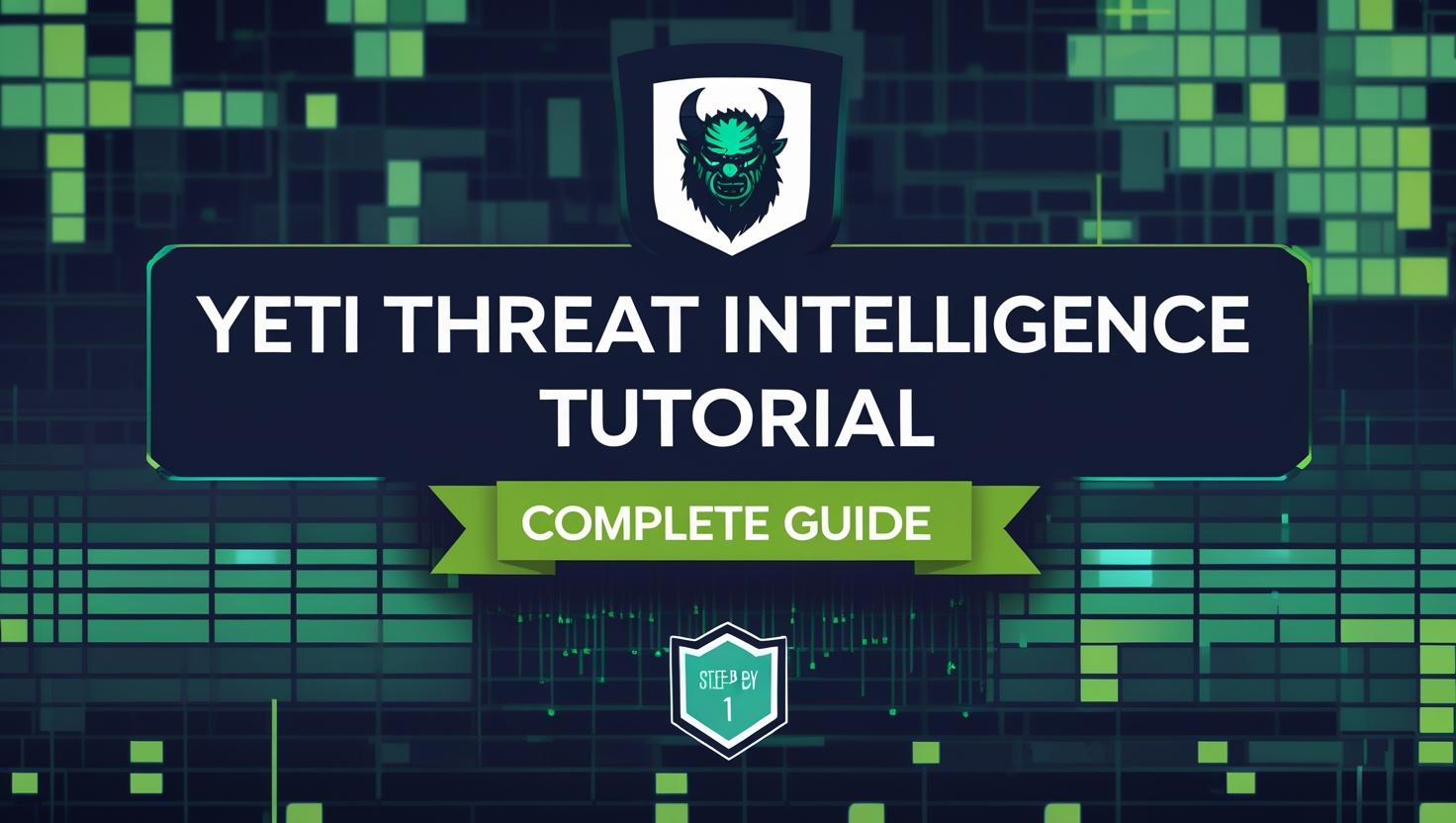In today’s digital landscape, cyber threats are evolving rapidly, making threat intelligence crucial for organizations to stay ahead of attackers. One powerful tool in the cybersecurity arsenal is Yeti, an open-source platform designed to collect, analyze, and share threat intelligence data efficiently.
If you’re new to Yeti or want to deepen your understanding, this tutorial covers everything you need to know about Yeti Threat Intelligence, its features, setup, and how to effectively use it for cyber defense.
What is Yeti?
Yeti (Your Everyday Threat Intelligence) is an open-source threat intelligence platform developed to help cybersecurity analysts aggregate and analyze cyber threat data. It allows organizations to collect indicators of compromise (IOCs), track attacker tactics, techniques, and procedures (TTPs), and collaborate securely.
Yeti’s main objective is to facilitate structured threat data collection, correlation, and enrichment to empower security teams in identifying and mitigating cyber attacks proactively.
Key Features of Yeti
-
IOC Management: Store and manage different types of indicators such as IP addresses, domains, URLs, hashes, and more.
-
TTP Mapping: Link indicators with adversary tactics and techniques for contextual understanding.
-
Data Enrichment: Automatically enrich threat data using external sources like VirusTotal, Shodan, or passive DNS.
-
Collaborative Environment: Share threat intelligence securely within trusted communities.
-
Customizable Taxonomies: Organize threat data with flexible categories and tags.
-
API Access: Automate workflows and integrate Yeti with other security tools via REST APIs.
-
Visualization Tools: Graphically explore relationships between threat entities.
Why Use Yeti for Threat Intelligence?
Cybersecurity teams face a flood of data daily. Yeti helps by centralizing and structuring this information so analysts can:
-
Quickly identify patterns in attack campaigns.
-
Understand the behavior of threat actors.
-
Prioritize alerts and responses based on reliable intelligence.
-
Collaborate efficiently with other organizations.
-
Automate routine threat analysis tasks.
Step-by-Step Yeti Threat Intelligence Tutorial
Step 1: Installing Yeti
Yeti can be installed on Linux servers. The recommended platform is Ubuntu 20.04 or later.
-
Prerequisites:
-
Python 3.8+
-
PostgreSQL database
-
Redis for caching
-
-
Installation commands:
-
Clone Yeti repository:
git clone https://github.com/yeti-platform/yeti.git -
Install dependencies:
pip install -r requirements.txt -
Set up PostgreSQL and Redis databases.
-
Configure environment variables and settings.
-
Initialize the database and run migrations.
-
Start the Yeti server.
-
You can find detailed installation instructions in the official Yeti GitHub repository.
Step 2: Configuring Yeti
-
Set up your admin user and log into the web interface.
-
Configure API keys for third-party integrations (VirusTotal, Shodan, etc.) to enable enrichment features.
-
Customize taxonomies and tags according to your organization’s needs.
-
Set access permissions for team members.
Step 3: Adding Threat Data
-
Use the Add Indicator option to manually input IOCs.
-
Import data in bulk using CSV or STIX formats.
-
Integrate with feeds to automatically ingest threat intelligence from trusted sources.
Step 4: Correlating and Analyzing Data
-
Link indicators to campaigns, malware families, or threat actors.
-
Use Yeti’s graphical interface to visualize relationships.
-
Apply filters and queries to find relevant data quickly.
Step 5: Enriching Threat Data
-
Enable enrichment modules to fetch additional details about IOCs.
-
This helps verify data and provides context for better decision-making.
Step 6: Sharing and Collaborating
-
Create trusted groups to securely share threat intelligence.
-
Use role-based access control to maintain data privacy.
-
Export intelligence reports in multiple formats.
Best Practices for Using Yeti
-
Regularly update your threat feeds.
-
Validate imported data to reduce false positives.
-
Train your team on Yeti’s features.
-
Automate alerting workflows by integrating with SIEM tools.
-
Document all investigation processes for audit purposes.
Yeti is a powerful, flexible threat intelligence platform that can dramatically improve an organization’s cybersecurity posture. By following this tutorial, security teams can set up, configure, and use Yeti to effectively collect, analyze, and share threat data, helping to stay one step ahead of cyber adversaries.
Whether you are a cybersecurity professional, analyst, or IT manager, mastering Yeti will empower you with actionable intelligence and collaborative tools essential for modern threat defense.
Parivesh Singh Gupta is the founder of TweeLabs, with over 12+ years of experience in digital marketing, SEO content writing, web development, and eCommerce solutions. He specializes in WordPress development, Meta & Google Ads, Shopify & WooCommerce, Canva-based design, and AI automation.
Parivesh helps startups and growing businesses achieve online success through high-converting strategies, powerful ad campaigns, and SEO-rich content that ranks.
For collaborations or consulting:
Email: parivesh@tweelabs.com
Website: www.tweelabs.com
Follow on LinkedIn: Parivesh Singh Gupta

